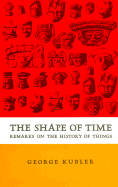
More evidence that workhorse sans serifs can transform even the humblest of thrash epics. This conceptual heavy metal graphic design project comes in the form of Metallica’s 1986 opus Master of Puppets processed in the title identity through the great leveler, Helvetica Franklin Gothic (see update below).
Noah Venezia, whose projects include the enigmatic Stupendous, has alchemically distilled the sleeve material of Master into a Swissly modernized poster. This approach isolates the text component of the album’s packaging, disorienting it in its degenrefication. It would be condescending to the original album to suggest this is an improvement; it’s apples to invisible oranges. (Master’s cover art was executed by the late Don Brautigam, whose Stephen King covers for Night Shift and The Stand, linger durably in my memory. Compared to what Ed Repka, Derek Riggs, and Joe Petagno produced the same year, Master of Puppets is the quintessence of subtlety.)

The original vinyl Master of Puppets packaging (European issue), via Johan’s Metallica collection site
Of the project Noah says, “Master of Puppets had a tremendous impact on me during my formative years. It was unlike anything I had heard and I became obsessed with it. People that I talk to either share a similar experience or it means nothing to them.
“My redesign of the liner notes was an attempt to glorify the album while also making it more acceptable to those unfamiliar. I wanted to compress it into a format that people did not question. I also wanted to make it more powerful simply by increasing its scale. It’s a sort of homage to the album.”
UPDATE: That is indeed Franklin Gothic. Though the main point adheres: it’s compelling to envision heavy metal through the conventions of modernism and clean type. And the pun in the hed is too good to ditch.
Noah says the poster will be on display at the new art + performance space Littlefield in the Gowanus neighborhood of Brooklyn on Friday, June 19.
Earlier: In lieu of a review: SUNN O)))’s Monoliths & Dimensions, The look of metal today











 But that’s okay, because <full discosure> Shawn and I have collaborated fruitfully over
But that’s okay, because <full discosure> Shawn and I have collaborated fruitfully over  blows away the new one.
blows away the new one. 
